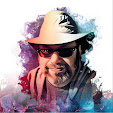 I read The Lost Symbol, by Dan Brown this week. Dan Brown is also the author of The DaVinci Code. Even if that fact hadn't been explicitly stated on the cover, I would have been able to tell quickly by reading the first few chapters.
I read The Lost Symbol, by Dan Brown this week. Dan Brown is also the author of The DaVinci Code. Even if that fact hadn't been explicitly stated on the cover, I would have been able to tell quickly by reading the first few chapters.In his previous book, Brown paints an opening scene with a dead man in the center of a round room with clues. This book features an amputated hand in the center of a round room with clues. In his previous book, Brown describes in detail the symbolism in the art and architecture of Rome. In this one he describes in detail the symbolism in the art and architecture of Washington, D.C. In his previous book there was a secret society called Opus Dei operating to protect secrets. In this book there is a society with secrets (the freemasons) operating to protect secrets. In his previous book, Brown describes a singularly focused villain, steeped in ritual and obsessed with his target. In this book, there is a singularly focused villain, steeped in ritual and obsessed...Okay, do you get the point yet?
This book WAS The DaVinci Code. It is so similar in structure and plot, that Brown refers specifically to the familiar beats of his previous work whenever (and it happens often) his hero, Robert Langdon encounters identical situations. I could almost hear Dan Brown, as Chris Farley saying, "Remember that part in the DaVinci Code where Langdon does X? That was awesome. I think I'll do it again."
I admit that there's only so many ways you can go with a hero with such a limited scope of expertise, and that just means perhaps it's time to write about something else. If you liked The DaVinci Code, you should like this book. But only if you enjoy reading books twice.



No comments:
Post a Comment